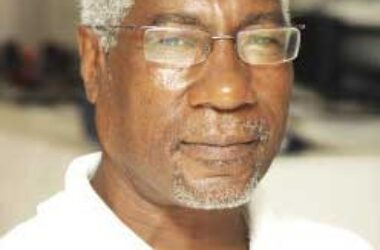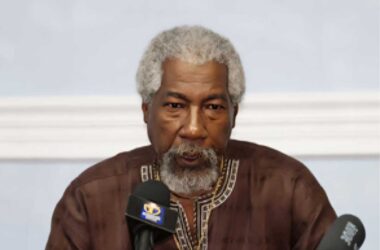
Introduction
In last week’s commentary, I revisited some of the arguments for and against a 2-hospital model. In part 2, I examine the bigger picture, including how we might fulfill a long-term vision for secondary health care.
The Bigger Picture
A debate regarding a 2-hospital model for Saint Lucia would probably have been moot, if the 2009 fire had not occurred at SJH. The people of the south had already grown accustomed to receiving a reasonable standard of albeit limited, secondary healthcare at SJH. Consequently, it is not unreasonable for them to expect this service to continue. However, the core issue is not whether the SJH should continue to exist, but the scope of services it provides within our national secondary health care system. As noted by the HSR Committee in its report, “hospitals handle life threatening conditions whose treatment demands the use of sophisticated, medical technology, capital investment and support services, commensurate with the medical conditions they treat and the procedures they perform. They also engage in teaching clinical medicine and in research.” I interpret this to say that if/when a hospital is built, it must be with the understanding that it must be adequately resourced.
It was well known that due to the geriatric state of the buildings at the SJH, a partial or total rebuild of that facility would have been necessary at some point. The existence of a master plan for the development of a national secondary health care system, would have guided the way forward on this. The fact that bed capacity for the OKEU was not set until late in its design process did not help. It will be recalled that the HRC and HSR reports argued that the futures of the OKEU and SJH are intertwined, and that the bed capacity of the former—which had not yet been settled—would have a bearing on the latter. Ideally, a symbiotic future for both facilities should have been settled, when the OKEU was being designed. As it turns out, to meet current demand (2023), the OKEU needs an additional 30 beds. It’s expected that this deficit will be addressed when the proposed Castries Multipurpose Facility at the former VH site is commissioned. During the COVID-19 pandemic, VH played an admirable role as a national respiratory hospital. I understand that plans are settled, to enable it to play this role again, should the need arise.
Affordability Concerns
Even with revenue from the Health and Security Levy, providing predictable and adequate funding for healthcare will be a huge, financial challenge. The annual cost of operating the OKEU and SJH will easily exceed EC$200 million. This estimate is based on the average, annual, operational cost of the 126-bed, OKEU of EC$94 million.
Often, I wonder what the fate of the OKEU would have been, absent the European Union’s (EUs) EC$120 million grant, which remains the largest ever made by the EU for a project in the Caribbean. Here, I’m referring, not just to money, but also to the suite of technical services and the project management skills that accompanied the EU’s support. Critically, while that project spanned changes in government, perhaps what saved it from a similar fate as SJHRP, was the fact that its design was already settled, and capable project management had already been contracted. Still, we did not clothe ourselves in glory, because while it took 7 years to complete the construction of the OKEU, it would take another 5 years before it was commissioned, with costly repercussions. For this reason, the OKEU does not have a functioning MRI machine. I gather one was installed, but because it was unused between the time it was installed, and the commissioning of the hospital, it will have to be overhauled, or replaced at high cost. MRI machines cost between US$150,000 for low-field MRI machines, to US$3 million for a high-powered MRI machine, that can deliver the most detailed results. To this purchase price, must be added, installation, operation, and maintenance costs.
It’s not clear whether adequate provisions have been made within the structure of SJH to accommodate such a machine. The location of these machines in a hospital cannot be an afterthought, as they must be installed in magnetically sterile rooms that eliminate outside interference, while protecting people and property outside the room from the magnetic fields. In this regard, the following questions emerge. Given the cost of acquiring, operating, and maintaining MRI machines, and the scarcity of experienced radiologists, should the OKEU and SJH both have high powered machines? It would certainly help if the government incentivized more certified, private providers of stand-alone MRI services to set up shop in Saint Lucia. However, these days, MRI machines are standard in most hospitals to address in-patient needs.
If this has not been done, I recommend that the Ministry of Health to quickly establish the terms of a symbiotic relationship between the OKEU and the SJH, based on a list of “concurrent” services they would provide an “exclusive” specialist services they would share. A critical area of concurrency would be EMT services. Both hospitals should have an adequate fleet of ambulances to shuttle patients between them. To ensure this relationship is mutually beneficial, and critically, to save costs, a National Hospitals Board ought to be established to oversee the Millennium Heights Complex and the SJH. Alternatively, the chairperson and CEO of one hospital should be members of the Board of the other.
Bouncing Forward
I continue to believe that being small does not mean we cannot achieve big things. Missteps have been made in our approach to building our secondary health care system, but that doesn’t mean we can’t bounce forward. In line with this thinking, nay conviction, my vision for our country’s healthcare system includes having a Tertiary Hospital that offers the type of services Saint Lucians now seek overseas, notably in Martinique (to whom we owe $2 million), Barbados, Trinidad and Tobago and the USA. In addition to having staff resources for advanced medical investigation and treatment, Tertiary Hospitals provide specialized consultative healthcare to inpatients referred by a secondary health professional, in areas such as cancer management, neurosurgery, heart surgery, plastic surgery, therapy for serious burns, advanced neonatal services, palliative care and other intricate medical and surgical procedures. If early consensus can be reached by stakeholders in the health sector, on an area of specialization, or medical research, that we might pursue, as part of a regional or sub-regional health care system, we can then devise a strategy to move us in that direction.
Despite its trials and tribulations, SJH has some advantages, including its proximity to Hewanorra Airport, and to Saint Vincent and the Grenadines, and Grenada. Moreover, it will have excess space, and buildings that could be dedicated to the selected area of specialization that is chosen. We could go alone or through a joint venture arrangement involving a well-resourced partner. It would make sense for the government to immediately begin the search for such a partner. In the meantime, it should urgently secure external technical support to assess the feasibility of achieving this goal within the shortest possible time.
Conclusion
The right to the highest attainable standard of physical and mental health is a fundamental human right enshrined in several international legal instruments. Saint Lucia has made meaningful strides in improving its national healthcare system. Still, the COVID-19 pandemic exposed innumerable weaknesses in the system which must be addressed if our country is to address these shortcomings and achieve the twin goals of universal access to safe and affordable healthcare. So fundamental is health care to the well-being of people and country, that it is tantamount to sacrilege to put a price on it. Still, this does not mean that countries should disregard the fundamentals of sound investment in and management of the sector. The aim ought to be to provide the highest standard of healthcare that the citizen AND the country can afford.
While the focus of this series of commentaries has been on secondary healthcare, we should recognize that the number and/or class of our hospitals is not nearly as important as the quality of our primary care services and the degree of personal responsibility we take for our health. We will never have enough hospital beds if the rate of increase in Non-Communicable Diseases (NCDs), violent crime and traffic accidents is not curbed. If our unrelenting focus, nationally and individually, is not on preventive care, we will need more Ear, Nose and Throat (ENT) specialists as we (Government and people) are destined to spend money through our noses on hospital care.
Next week, we extract the lessons from the SJHRP.











